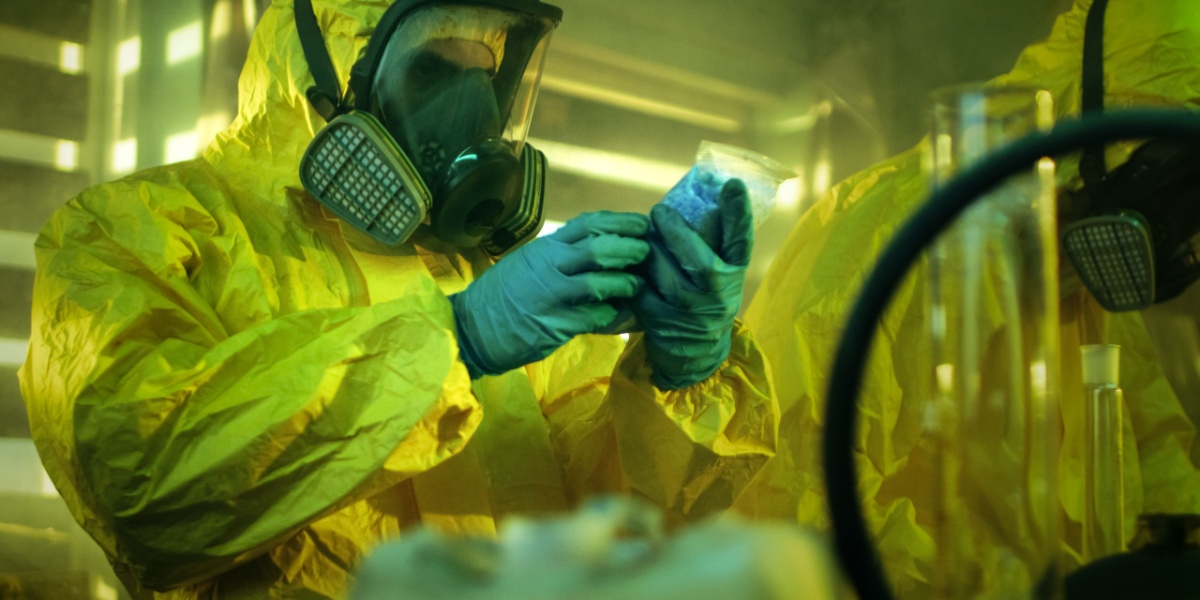Methamphetamine (otherwise known as meth or crystal meth) use is an ever-growing concern. In the U.S. alone, an estimated 16 million people have used meth at some point in their life, and this number is only set to increase. This article explores the risks associated with the production of this illicit and hazardous drug. [1]
The following content is for educational purposes only. Information on ingredients and processes will provide a general understanding of the topic and does not include detailed instructions for the illegal production of meth.
This platform does not support or endorse methamphetamine use or production, which is illegal and has dangerous health implications.
- Meth is made by “cooking” a combination of hazardous chemicals. There are several different ways to make meth, including the red phosphorus method and the shake-and-bake method.
- Common ingredients include ephedrine/pseudoephedrine (found in cold and flu medicines), red phosphorus (found in match heads), anhydrous ammonia (fertilizer), lithium, drain cleaner, acetone (paint thinner), and strong acids.
- Meth production can result in corrosive spills and toxic fume pollution. If you suspect there may be a meth lab near you, share your concerns with law enforcement immediately.

How is meth made? A look at the process
Unlike other drugs such as cocaine, heroin, or cannabis, meth is not derived from plants; rather, it is “cooked” from a combination of chemical components. There are a few different methods of meth production, and each comes with its own risks.
Red phosphorus method
This is one of the most widely used methods of meth production. It involves combining ephedrine or pseudoephedrine with red phosphorus and iodine. Because these precursors can be found in everyday household items, this tends to be the preferred production method in small- to medium-sized labs, which use these products in small quantities. [5]
The red phosphorus method produces toxic and flammable fumes, which can easily lead to an explosion.
Shake and bake method
Shake-and-bake is a one-pot method of meth production. Anhydrous ammonia (found in fertilizer) is combined with pseudoephedrine, water, and lithium metal in a sealed container. The mixture is then agitated, causing pressure to build up in the bottle, and a small amount of meth is created. The idea behind this method is to reduce the time needed to make meth in small batches. [6]
The pressure build-up during production is highly dangerous and can result in an explosion or even a fireball. The toxic products left in the bottle at the end of the process are often discarded, and they can cause harm to the environment or individuals who come across them. [6]
Other methods
There are several other variations of meth production that are used by different groups and lab sizes: [5][7]
- Birch/Nazi method: Using a combination of ephedrine or pseudoephedrine with anhydrous ammonia and sodium or lithium metal, this is similar to the shake-and-bake method. One difference is the Birch/Nazi method uses typical meth lab equipment.
- Phenyl-2-propanone (P2P method): Using a mix of phenyl-2-propanone, aluminum, methylamine, and mercuric chloride, this method is most commonly associated with outlaw motorcycle gangs.
- BMK method: In this method, a pre-packed precursor chemical called BMK is combined with methylamine. Large-scale production gangs may prefer this process to overcome the difficulty of obtaining sufficient quantities of cold and flu medicines that are required.
- Hypophosphorous (hypo) method: In this method, ephedrine or pseudoephedrine is combined with iodine and hypophosphorous acid. This method is hazardous due to the explosive phosphine gas produced during the reaction.
What is meth made of?
So, what is meth made of? Some commonly used ingredients include: [2][3][4]
- Ephedrine or pseudoephedrine (often extracted from over-the-counter cold medicines)
- Red phosphorus (found in match heads)
- Hydrochloric acid
- Anhydrous ammonia (found in fertilizer and often stored in propane tanks before use)
- Drain cleaner
- Battery acid and lithium from batteries
- Lye
- Lantern fuel
- Antifreeze
- Paint thinner or acetone
- Ether (also known as starter fluid)
- Iodine crystals
The majority of these ingredients are volatile and highly toxic. Exposure to fumes and spills can cause significant harm to those making meth, as well as those sharing the environment (such as family members or children). The vapors created during the cooking process are highly flammable, and meth lab explosions are unfortunately commonplace. [3]
"Cutting" meth with other substances
Aside from many residual toxic impurities from the production process, meth may be intentionally cut with other substances: [8][9][10]
- Fentanyl: This powerful opioid drug causes significant sedation and contributes to the potency of a meth high. It is often added by suppliers to increase the addiction potential of their product, ensuring people who take meth remain hooked. The overdose potential of meth cut with fentanyl is very high and can easily lead to hospitalization or death.
- Xylazine: Xylazine is a sedative that, while not approved for human use, is sometimes used in veterinary medicine. Stolen or illicitly obtained xylazine can be added to meth by suppliers as a cheap way to increase the volume of the product sold. People who have taken xylazine in meth report significant unwanted effects, including dangerous levels of sedation (compromising their ability to breathe) and extreme blood pressure spikes.
- Methylsulfonylmethane (MSM): This odorless white powder is often added to meth before it is sold to increase the volume of the product. Although MSM is a harmless additive, the variations in meth concentration due to different levels of cutting by suppliers can increase the risk of an accidental overdose.
The dangers of meth production
After discussing how meth is made, it is necessary to understand the risks associated with meth production. Beyond the harms of the drug itself, production comes with the following additional dangers:
- Chemical burns: Many of the products used to make meth are highly corrosive and can cause severe chemical burns on skin contact.
- Fume inhalation: Toxic fume inhalation can cause severe respiratory distress and has implications for long-term lung health.
- Explosions: The chemicals used in meth production are volatile and can readily combust if in contact with an ignition source, such as a spark or open flame.
- Family exposure: Unfortunately, meth labs are often found in people’s homes where family members and children are in regular contact with this hazardous process.
Legal ramifications of meth production
Methamphetamine is a Schedule II controlled drug in the U.S. This means that it is illegal to possess (without a prescription), sell, or manufacture without a license. Street meth is always illegal, and the pharmaceutical version is only prescribed in strictly controlled settings to treat attention-deficit/hyperactivity disorder (ADHD). [11]
In the U.S., the vast majority of crystal meth is trafficked into the country. In 2022, individuals sentenced for trafficking methamphetamine received an average sentence of 7.5 years in prison. Sentences for meth manufacturing range from 5 years to a life sentence, depending on the presence of aggravating factors (such as the amount produced and if the drug has resulted in a death). [12][13]
Methamphetamine production statistics
The 2024 World Drug Report produced by the United Nations Office on Drugs and Crime highlights some key global meth trends in 2022: [14]
- 367 tons of methamphetamine were seized worldwide.
- Meth production is rapidly increasing in Southwest and Central Asia, possibly in response to an opiate crackdown in Afghanistan.
- 30 million people worldwide have used illicit amphetamines in the previous year.
- North America has the 2nd highest rate of methamphetamine use of any region.
- In 2022, only 133 meth labs were identified and dismantled in the U.S. This is a dramatic reduction from the 13,667 meth lab incidents reported just 10 years earlier, reflecting the move towards trafficking meth from overseas.
The negative impact of meth production on communities
The production of methamphetamines affects not only the individuals involved but also the community at large. These are some of the broader effects of meth manufacturing:
- Increase in crime: Criminal organizations often control meth manufacturing and distribution. Antisocial behavior and violence can spill over and impact others living in the community.
- Damage to property: Empty properties can be a target for the setting up of a meth lab. The owners of these buildings are usually unaware that this activity is taking place and face huge costs when looking to repair the damage done to the property.
- Environmental damage: The toxic chemicals used in meth manufacturing harm the local environment, often seeping into groundwater. Hazardous fumes can also affect the health of those living nearby.
- Disruption of families: When meth labs are set up in family homes, children are exposed to the dangers of meth manufacturing which often necessitates removal by Child Protective Services.
- Exploitation of vulnerable individuals: In areas of high unemployment, criminal organizations exploit individuals in financial difficulty with the promise of money or housing.
- Burden in public resources: The economic costs of dealing with meth labs have a direct impact on the government’s ability to provide other community services.
Identifying a meth lab
If you suspect there may be a meth lab in your area, do not approach. Inform your local law enforcement agency of your concerns. Some signs that may indicate the presence of a meth lab include: [15]
- Suspicious behavior (including frequent visitors at strange hours)
- Excessive trash (particularly cold and flu medication boxes, lab equipment, stained coffee filters, etc.)
- Strong chemical smells (including ammonia, acetone, or solvents)
- Presence of chemistry equipment, such as beakers
- Blacked-out windows

-person-thumbnail.jpg?v=1758880627)
-guide-detail.jpg?v=1722502712)
_-How-It's-Made-guide-detail.jpg?v=1762879049)
-guide-detail.jpg?v=1722502281)